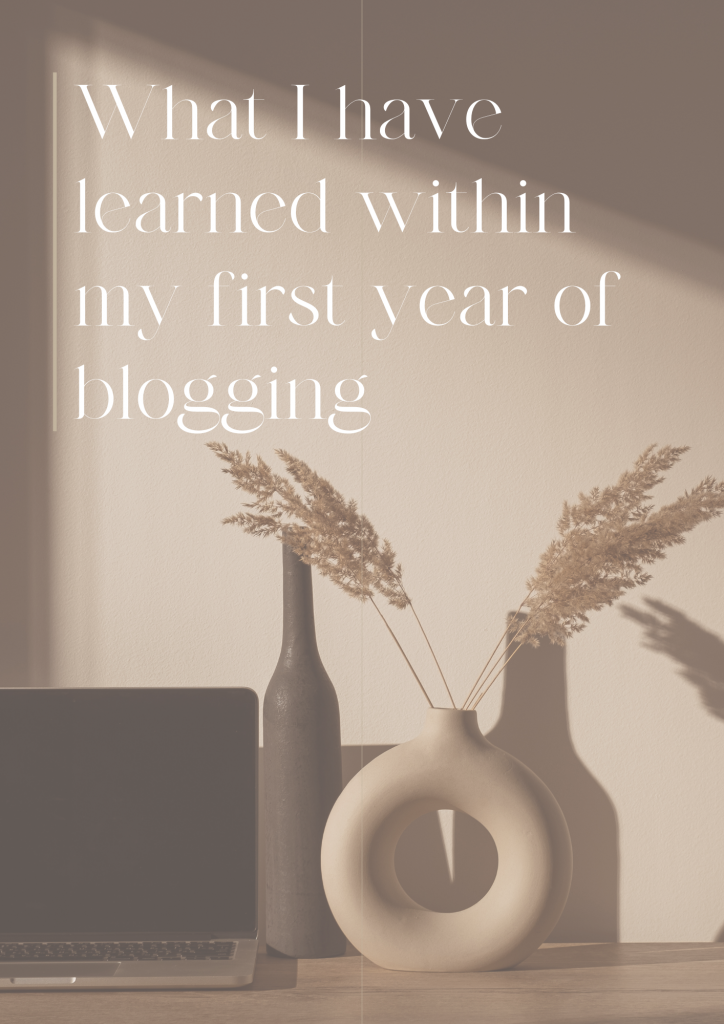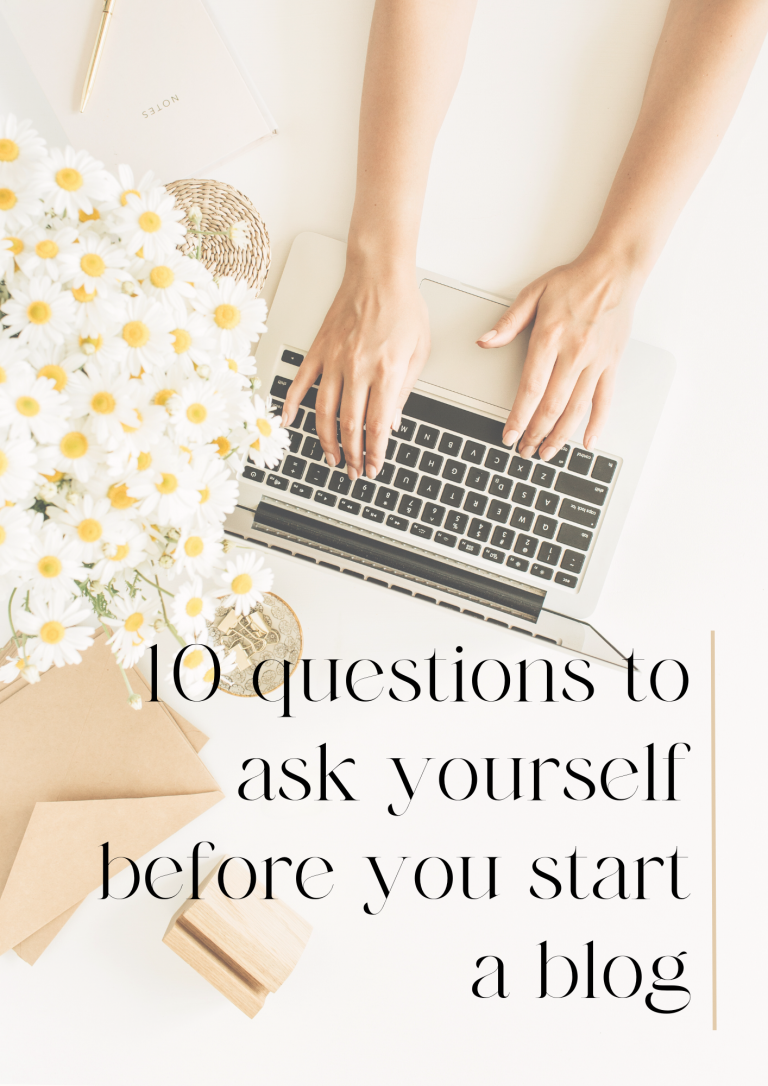How to write your first blog post in 7 simple steps
Even though writing a blog post may differ significantly from anything you usually consume in written form, like books, magazines, etc., it can be straightforward with the right tips and tricks. In today’s blog post, you’ll get to know the foundation you need to know to write your first blog post, and I will show you how to do this in seven simple steps.
People tend to consume anything in written form differently on the internet. With books, we are used to reading word by word, phrase by phrase and chapter by chapter. This is clear for most since reading a book from start to finish makes the most sense to get into a story or to get to the root of that specific book.
But on the internet, blog posts are usually used to quickly get as much information as possible. Therefore, following a few rules when creating blog posts online is best to make it easier for your readers.
Before going any further, let’s clarify:
What is a blog post?
A blog post is content made of words, usually about a specific topic of relevance. Blog posts are typically published on a blog on the internet. A blog post could include recommendations for particular products, tutorials, how-to’s, tips and tricks, personal experiences, reviews, etc. This means a blog post usually has educational character, and you are likely to find blog posts with a word range from at least 500 words to typically 2,000-5,000 words, depending on the topics.
The easiest way to build a solid blog post is to use the structure of a three-part essay. This means creating an introduction, a main body part and a conclusion. Because this usually is what a blog post is – an essay about a specific topic. This sounds very simple, and it is simple. Because always remember: You want to reach as many people as possible with your blog posts. This means that the simpler the structure and the more manageable your voice, the more people can enjoy your content.
And this is precisely what you want. You want to show the world that you are an expert in your preferred field and that you can explain your topic with simple words and a simple structure. Usually, the more straightforward you can define a subject, the better your understanding of it.
Now, let’s dive right into how to write your first blog post in seven simple steps.

1. Make a catchy and short introduction
To start with your blog post, you want to make it easy for your readers to give themselves an overview of the topic they’re about to read. Always remember: you are the expert and creator of your piece of content. Therefore, you’ve spent much time with the topic you’re writing about.
But your readers may be completely new to the topic. Therefore, you want to avoid overwhelming them. Always keep it simple, especially in the introduction.
With your introduction, you want to welcome your reader to your content. This means three things:
- Make clear what the blog post is about in a few easy sentences to give your readers an excellent overview of the topic.
- Give the reader general information so that they can understand and digest what you’re about to dive into – for instance, in this blog post, I informed you at the very beginning about what a blog post is in general, just in case you may not be familiar with what it means to create a blog post. This way, I ensure that everything I’m about to write following is comprehensive and easy to understand. And you, as the reader, and I are on a common denominator.
- Make your introduction simple and avoid overloading it with too much information – here, less is more – you have plenty of room in the body part to prove your expertise to your reader.
Suppose you’ve already written a blog post about the same topic and believe it to benefit your reader. In that case, your introduction is the place to link relevant informational blog posts. Even if it’s tricky to send your reader to another blog post right away, always remember that you want to be as helpful as possible to your readers.
And if you can do this by sending your readers to another blog post of yours because it’s relevant for this blog post, go for it.
2. Cover the most relevant information in the body part
It’s time to shine in your body part of the blog post.
Now, you can prove that you truly understand your topic, and here, you can bring all relevant information to your reader. But don’t get me wrong:
Being an expert does not mean that you need to have a degree in a specific topic. It means that you have relevant information about an issue you can share with others. Being an expert means that you’ve made experiences in your life which you can share and benefit others.
Also, if you are reading this blog post, a part of you is already convinced that you have what is required to be a blogger and to write your first blog post. My tip for you is to stick with this uncomfortable feeling of being an imposter. It’s very natural, and it’s just in your head. It will get easier the more you practise writing blog posts. And you will get more confident about your skills. You already have everything you need to be successful. You just need some time to figure that truth out; that’s it.
Please keep it simple.
Now that you know you’re an expert with all your life experiences don’t overdo it. Your reader may be new to the topic. Therefore, you want to start with the most basic information you can share about the subject and work further to get more into the details.
This way, your readers can decide how much information they can and want to digest. Also, sticking to this structure will guarantee always keeping the common thread. This is the most critical part.
If your blog post is confusing, you’ll lose your readers immediately.
Always remember that your readers are looking for information and hope to find it within your blog post. Here is an example for you if you’re struggling with where your focus should be when creating a blog post:
Suppose you learn a new language. You will always start with the basics since starting with some advanced words and grammar structure wouldn’t make sense. You wouldn’t be able to understand them without spending time building a solid foundation by learning the bare basics. Therefore, you will always want to discover the basics and learn more details later.
This works with languages and also with your blog post.
Share with your readers the most basic but relevant information, and then, when you’re sure that you covered them precisely, you can share more profound knowledge.
3. Use different headings
By nature, your readers will consume your blog posts entirely differently than an average written piece of content like a book.
The internet is a fast place where uncountable information is shared daily. Usually, your readers won’t come to your blog to read for hours about anything you have to share. Of course, there are always exceptions to that rule. But usually, your readers want to find the information they’re looking for, and they want it fast.
To make it more straightforward to navigate your blog post, you must include many subheadings besides your main title. I know this can be unclear at the beginning of your blogging journey, but you will get it quickly.
Get inspiration.
My pro tip for you is to check out the blog post structure of bloggers you love reading about. This way, you can analyse why you love their content and how they structure it to be a good read.
But only ever get inspiration from them! Never copy someone else content!
First and foremost, your readers want to read your content, and second, it’s not authentic and healthy in the long term if you copy content from other creators. This will soon cost you your readers following, and ultimately, people will know if you are not creating the content and will avoid your blog.
Because I know it can be not very clear, especially at the beginning of your blog post journey, let’s briefly get you some insights about headings:
Heading 1:
This is typically your main heading, your blog post title. For this blog post, my heading 1 is How to write your first blog post in seven simple steps. Therefore, Heading 1 is the biggest in format and is always at the beginning of any blog post.
Heading 2:
Usually, my Heading 2 includes all the main points of the blog post. I use Heading 2 in this blog post for steps one to seven. This will create a framework for the readers to have a better overview of how I structured this blog post, making it very easy to navigate through this blog post.
Heading 3:
Heading 3 type, I usually use for my subheadings within the paragraphs of Heading 2 (step one to seven titles). Again, I do this to make it easier for my readers to navigate through the blog post.
Heading 4:
Heading 4 I typically use to highlight any words or phrases that are crucial information for the readers. But since I use a lot of Heading 2 and Heading 3, I barely ever use Heading 4 since I want to keep my blog post as clean and straightforward as possible. Again, less is more!
Using differently formatted headings in your content will create a significant visual effect for your readers. This way, they can navigate your blog posts more easily, guaranteeing they can digest your provided information more profoundly.
Always remember: the more comfortable your readers feel and the better they can navigate your blog posts, the higher the chances they will read them until the end.
You may also like
4. Proofread your piece of content
This is the most crucial step in creating any new blog post, whether it’s your first post or if you have created content for years. Proofreading your blog post will ensure that everything you wrote before makes sense and that the most avoidable mistakes are erased.
The reason why this is so crucial for any good blog post is that as soon as your readers identify mistakes in spelling and grammar, the reading flow will be interrupted, and for many people, reading writings that contain a lot of errors can be very disturbing, which can cause your readers to leave your blog post.
Also, if your blog posts contain a lot of mistakes, this will tell a lot about the quality of your content and you as the creator. Of course, you do not have to have studied to become a successful blogger, but you must consider what your content looks like.
Suppose you need help with English and have difficulties using the proper grammar, word spelling and punctuation. Or, like in my case, if English is not your first language, but you want to write your blog posts in English and be as inclusive as possible, this is the moment to choose the right tool to assist you in creating beautiful blog posts that convert.
The best tool for using correct English is, hands down, Grammarly (it’s not sponsored. I love this tool and highly recommend it to you). I have used Grammarly for almost two years, since the very beginning of my blog, and I couldn’t be happier with this tool. No matter what kind of written content I create, there is no passing any day without me using Grammarly to proofread my creations.
What I love about Grammarly and why you should give it a try:
1. Flexibility
Grammarly works for me, no matter where or what software I’m working on. Also, it does not matter if I’m working in the morning, during the day or until midnight; as long as I’m connected to my internet, Grammarly works and does its job.
Also, by using Grammarly, I benefit from real-time communication. As soon as I type my phrase on a document, Grammarly gives me immediate suggestions on improving, if necessary (which it is most of the time).
What gives me extra flexibility when using Grammarly is that it only gives me suggestions. This means that I’m in complete control, whether I take the advice the program provides me or if I would like to dismiss them and keep my wording.
This gives me maximum flexibility and confidence to create new blog posts every day at any time. It’s an investment that serves me 100% from the beginning because my anxiety and insecurities regarding a foreign language rest whenever I use Grammarly. After all, as soon as I’m ready to perform, Grammarly is also.
2. Accuracy
Since I’m not 100% confident in my English skills, it’s a massive relief to know that I have a premium tool on hand that performs 100% of the time I’m using it. I never found any mistakes in my writing (except those I made and forced Grammarly to dismiss). This has built trust on my side to use Grammarly further in the future because I know it works for me.
3. Independence
What I love about Grammarly is that I’m fully independent of anyone else. I don’t need an expert in the English language to proofread my blog posts since I have Grammarly, which does the job for me. This makes it very convenient to edit my writing.
4. Easy to use
Grammarly is very straightforward to use. As soon as it’s installed on your computer, you can use it in a lot of software to get real-time communication and suggestions for improvement.
5. Work with AI
Using Grammarly, you can use AI (artificial intelligence) as quickly and conveniently as possible. Grammarly offers the option to use AI with its regular grammar suggestions. Grammarly’s AI version is called Grammarly GO.
With it, you can easily let yourself give ideas for improvement, gather new ideas for your blog post, brainstorm about the current topic you’re working on, and so much more. I find it very convenient whenever my active vocabulary lets me down, and I search for precise words to use in my creations.
6. Enhancing my work
Thanks to Grammarly, it not only corrects any mistakes I make during the writing process (which is usually a lot), but it also gives me advice on avoiding word repetitions by suggesting other, mostly better-fitting words. Grammarly helps me with sentences that don’t make much sense as I write them and change the word order to make it easier for my readers to understand what I’m talking about.
7. Improving my English
The last thing I love about Grammarly is that I can improve my English skills daily. Since English is not my first language, I have a lot of room for improvement. Because I use Grammarly so frequently, and since it does correct me on the same mistakes repeatedly until I finally do it correctly, my English improved massively in the last two years.
Using Grammarly will make your life as a content creator much more straightforward. It will save you time and energy because it’s completely taking over the exhausting part of proofreading your content. Grammarly will make you more confident about your writing skills, and with the saved time, you can use your precious time for the most crucial part: creating new content, being creative and, most importantly, being helpful to your readers.
As a part-time blogger, I can only imagine creating my content with the support of Grammarly. I’m convinced my blog posts could never compare to what I usually write nowadays if I didn’t use Grammarly daily.
If you want to get more information about Grammarly or want to try it, here is the link to their website.
5. Make a conclusion
Whenever you think you have shared all the information you’ve planned to share with your readers, you can conclude your blog post. Here is your time to gather together briefly the most important information so that your readers have your output packed compact.
Usually, in a conclusion, you never put any new information out. Your main body part is the place for all further information. The conclusion is there to make the writing cycle complete. To round things up so that you are as helpful as possible.
6. Build a call to action for your audience
The conclusion of your blog post is also the perfect place to build a call to action for your audience. This could be anything you want your readers to get active on.
Calls to action (CTA) you see regularly on blogs are:
- Connect on Social Media
- Share this blog post
- Subscribe to the blog via Email List
- Comment or get in touch with the creator
What’s great about building a CTA in your conclusion is that you actively push your readers in a specific direction. Often, when you, as the creator, share helpful information with your audience, they read what you want to share with them, but sometimes, your readers need a gentle push in the correct direction to get active themselves.
But again, keep it simple. You want to ensure your audience can adequately digest your last few sentences.
7. Link relevant blog posts
At the end of your blog post, this is a great place to link related blog posts to your topic. Your readers already went through all the information you share with them; this usually means they want to hear more from you!
Give them the chance to do this effortlessly.
Also, chances are high that if they are interested in what you could share about one of your preferred topics, the reader would be interested in anything else you’re talking about simply because one person is barely ever interested in only one topic.
Just think about yourself; you will get inspired by many things, not just one. You are also on the internet, seeking inspiration and information from several sources. And that’s great!
Therefore, give your readers the chance to stay a little longer on your blog by bringing your other great content in front of their eyeballs.
Writing a blog post can be straightforward with the proper structure and tools.
Start by sticking to this basic structure shared above, and as soon as you feel comfortable creating new content by applying it to the three-part essay, you can get as creative as you wish!
But I would highly recommend that you stick to a structure as long as you’re still learning the basics of writing. This way, you have a frame you can operate from, and your blog posts will be a success.
I know it can be tempting, especially as a newbie in the blogging world, to procrastinate your first blog post to a later date somewhere in the future.
Start with your first blog post today!
Let me give you this advice: Start with your first blog post today. Start today, even if your skills are far from perfect. Do it all yourself, even if you’re afraid of failing or feeling uncomfortable. Fail hard, stand up and try it all over again. If you aim to succeed in writing blog posts, you must practise writing blog posts. And with practising comes perfection. But you must start imperfectly. You must take imperfect actions first to get perfect someday. And you will, but you must begin with your current skills, even if they are bare. This is the only way you can become glorious eventually.
And always keep in mind: Failures are a blessing. With failing in life, you can learn new things. You can learn to improve yourself; failing in life will push you over your comfort zone, which is where you want to be. Because out of your comfort zone is where you learn to do things more efficiently, where you can become perfect eventually. But you must feel uncomfortable, and you must face the unknown. You’ve got this!
Get active today! Write your first blog post today!
Until next time,
Keep evolving into your most glorious self!









